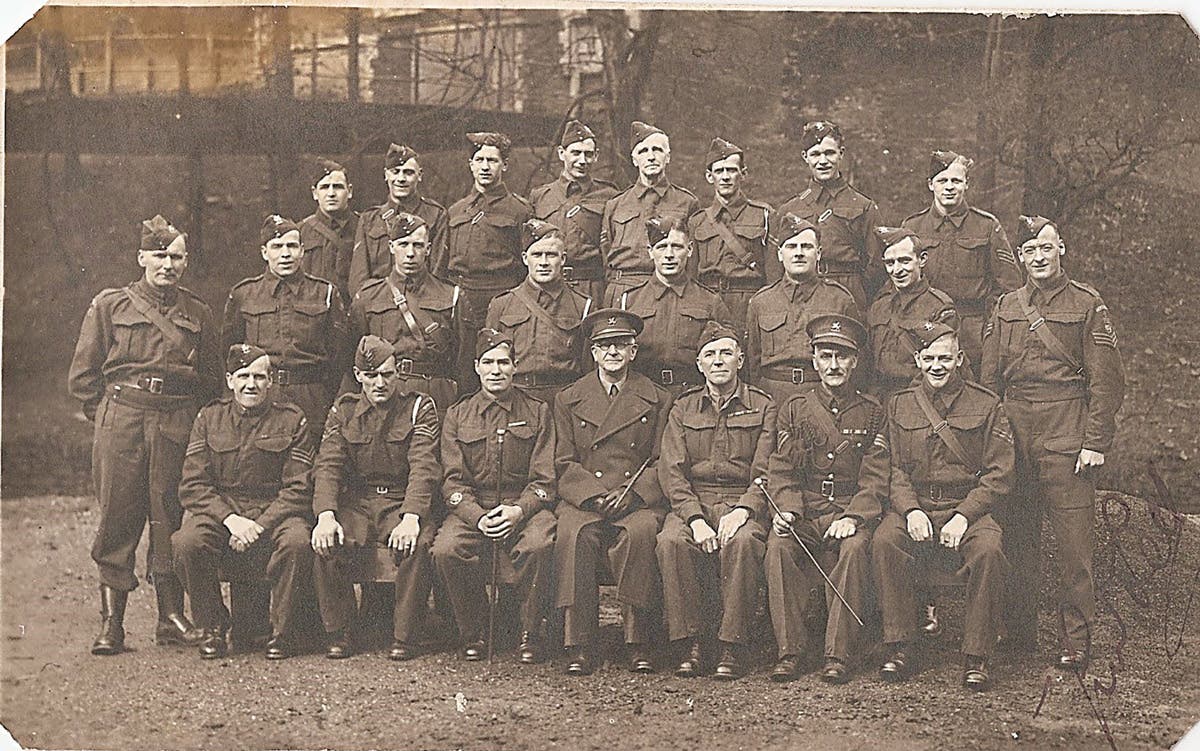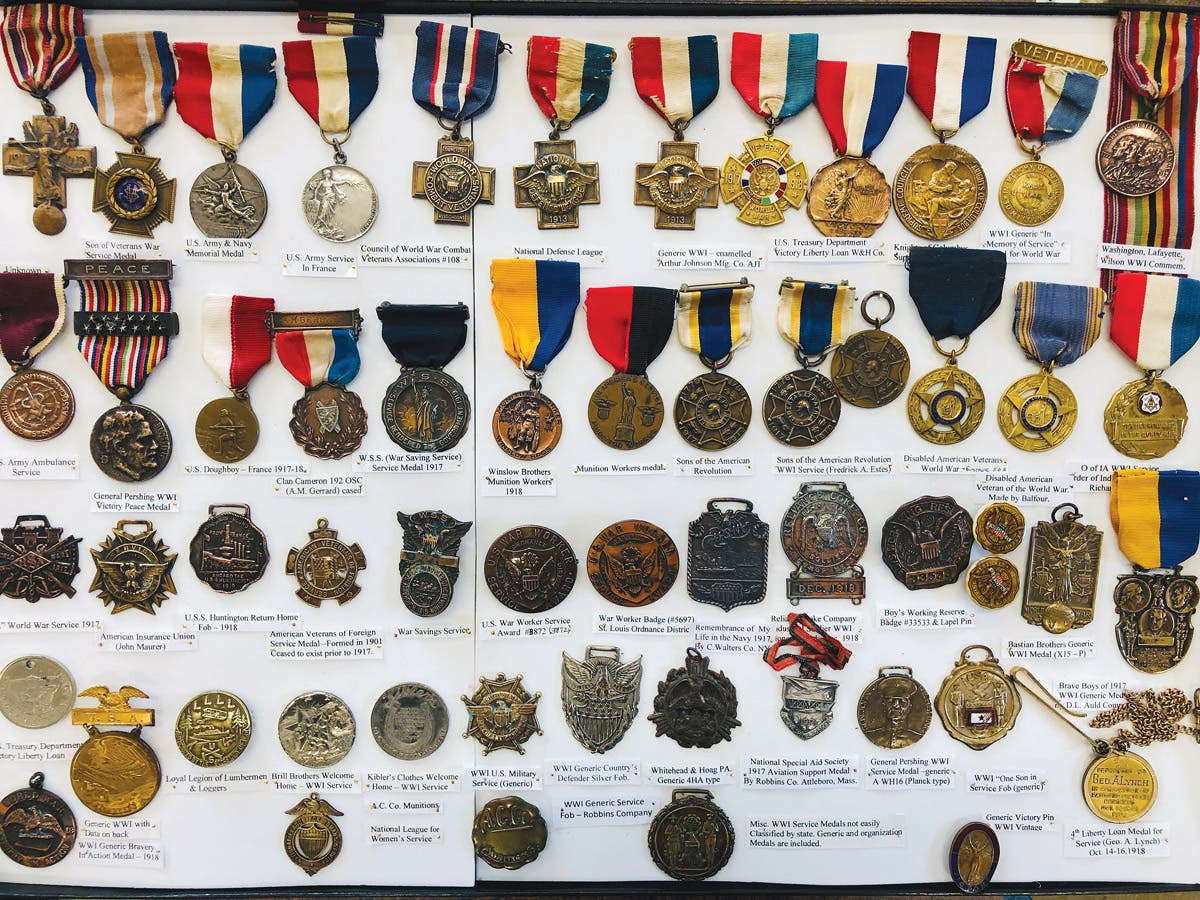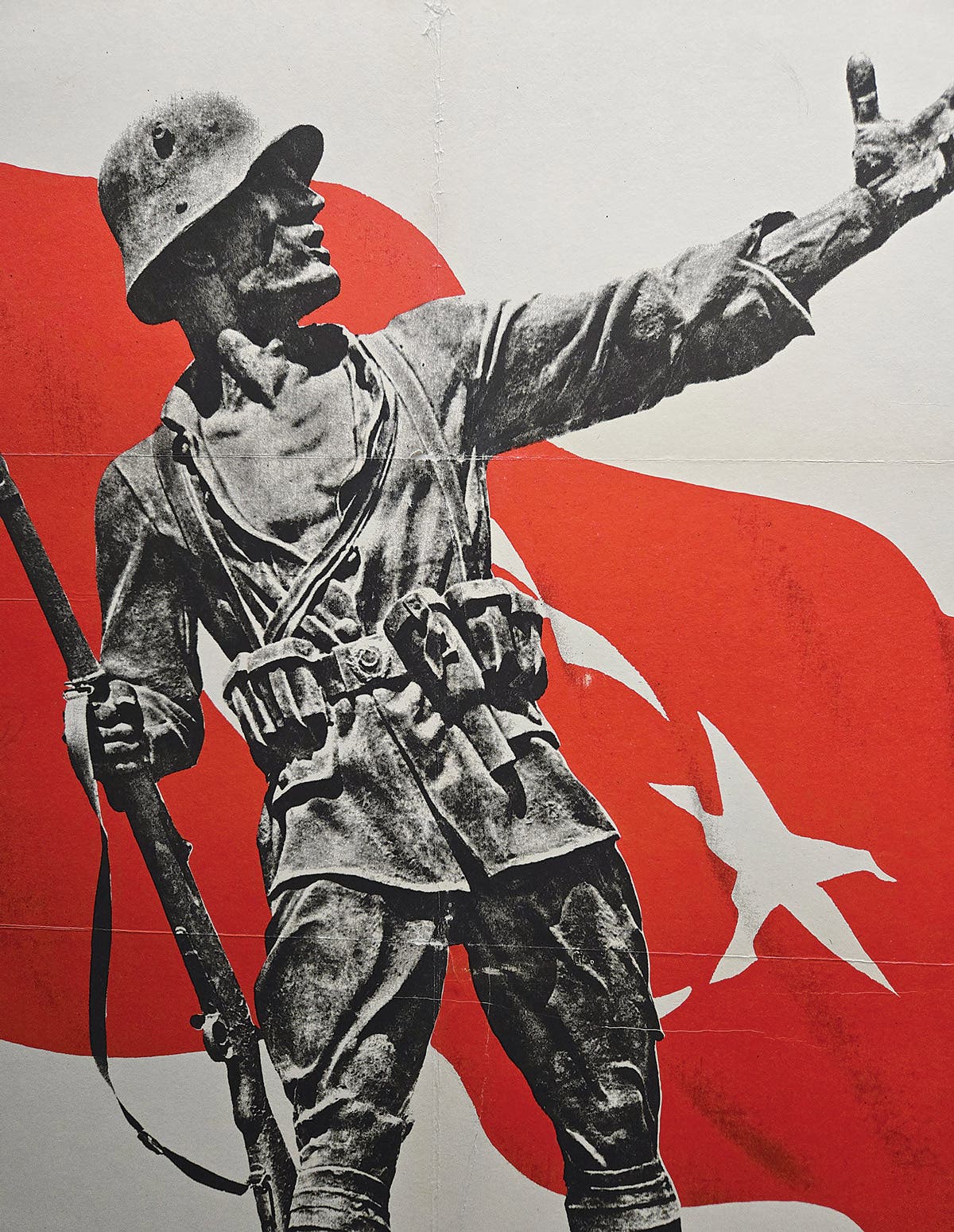Myths, fables and downright lies about military helmets
There is a lot of misinformation and confusion about military helmets. We blow the lid off the fiction and facts.
Ken Niewiarowicz
One of the biggest misconceptions among militaria collectors is that “history” is fact. This is not exactly true. In fact — no pun intended — history didn’t even really “happen.” The past happened, and the events of the past become the history. For various reasons “history” is not the absolute truth. Facts can be misinterpreted, details misunderstood and information misread. All of this makes studying history and inexact science, and causes plenty of stumbling blocks for collectors of historic objects.
For new collectors, things can get very confusing. This is particularly evident with helmets where “information” ranges from confusing to downright wrong.
More importantly, because of the Internet, misinformation is often spread, quoted and cited. While decades ago there were only a handful of books on the subject of helmets, and most of these were limited to German helmets from World War I and World War II, today there are dozens of books on the subject, but much information is still unclear. And except for American and German helmets, to this date very little has been written in length on international helmets – and much of what has been written on Italian, French, Polish or Japanese helmets has been in those languages.
All this has made the spread of militaria misinformation very common. Following is a look at some of the most common myths, fables and downright lies about military helmets:
MYTH #1.
Lead Paint Is A True Sign Of A Good German Helmet
The myth: The fakes today are so good it is sometimes hard to tell a real helmet from a bad one, but a surefire test is whether there is lead paint. Lead paint was commonly used before kids started snacking on the paint chips. So old paint must be old.
The truth: “On the contrary,” says advanced German helmet collector Ken Niewiarowcz, who notes that if there is lead found in the paint, something is wrong. “The fact is that if one takes a lead test strip (available through the EPA or at any hardware store) and tests the surface of any factory painted helmet, it will indicate negative as far as the presence of lead. People assume that all old paint has lead. True, it was added as a binding agent to most latex and certain enamel paints, but not the types of lacquer and enamel used by the helmet producing factories.”
There is an exception to the rule, though. Niewiarowcz, who is authoring a new book on German helmets, says this rule does not apply to camo helmets, which may use paint obtained from a limitless variety of sources. So a camouflage helmet with the so-called “Normandy Pattern” paint scheme could have lead, or it might not.
A comparative look at the Soviet SSh-40, Czech Model 1953 and
Hungarian Model 1973 which shows that, beyond the obvious
differences in liners and rivet placement, the helmets possess subtle
differences in the shape of the steel shells. Peter Suciu
MYTH #2.
German Helmets Had Sand Mixed Into the Paint
The myth: The texture on German helmets, including those with camouflage paint, has a sandy texture.
The truth: German helmets did have a texture that is observed on helmets painted according to the 1940s spec, according to Niewiarowcz. This was instead of the pre-1940 smooth finishes, and people may assume it to be sand. “The actual material used was powdered aluminum oxide,” explains Niewiarowcz. Big difference and a telltale one at that.
MYTH #3.
German Model 1940 Helmets Should Only Have A Single Decal
The myth: The German Wehrmacht realized that the pre-war “Apple Green” and “Parade Blue” helmets used respectively by the Army/SS and Luftwaffe weren’t ideal for combat and, more importantly, the tri-color shield made it too easy for soldiers to be seen. The order was given to remove existing decals and that all future helmets would be issued with a single decal. Thus, only Model 1935 helmets should have two decals — and thus be “double decal.”
The truth: The truth is part of the myth. The Germans did change the color of the helmets from green to a darker gray color, and the decals were indeed ordered off. But that’s where the truth ends and the myth begins. The order didn’t strike at midnight on January 1, 1940 and some Model 1940 helmets, with the modified vents, were produced with two decals. “At least two of the factories (ET and Q) continued for a short time to produce Heer (army) and SS helmets in double decal configuration after the switch to the Model 40 helmet shell and after the switch to 1940 specifications of the painted finish,” stresses Niewiarowcz. “Of course, helmets supplied to the feldgendarmes continued to be adorned with two decals until the end of the war.”
MYTH #4.
Germany Made Spanish Helmets
The myth: This story is typically repeated on eBay: Germany, after World War II produced the Spanish Model 1942 or Modello Z helmets. The typical reason given by sellers is to help the German economy — as if producing a few thousand helmets would eventually transform the nation to the most prosperous industrialized nation in Europe (well something did, but it probably wasn’t helmets).
The truth: The Spanish essentially copied the German design, but the helmet was not made in Germany or on German equipment. This is no doubt a story that sprung up to convince would-be collectors that the $50 helmet is somehow “German in origin.” There is nothing wrong with Spanish helmets, and the nation produced a variety of interesting helmets — and used a variety of other helmets from other nations, notably Czechoslovakia — but except for a few German helmets that may have made it to Spain, these weren’t truly German.
MYTH #5.
U.S. Sun Helmets Of The 19th Century Were Made In England
The myth: The United States Army used English-made sun helmets during the 19th century.
The truth: It is hard not to think of the British when you see a pith helmet, but the truth is that many nations, including the United States, used the design. The American pattern typically differs from the British model in that the American helmets have four seams and panels whereas the British have six seams and panels. Most American helmets were made by only a few firms including the New York based McKennedy and Company and the Horstmann Brothers and Company of Philadelphia.
Twist on the myth: Often, American helmets show up as “British Pith Helmets” on auction sites such as eBay. While the British didn’t make these helmets, they didn’t use them either.
MYTH #6.
The USMC Wore EGA Insignia On Its World War I Helmets
The myth: The “Devil Dogs” wanted the Germans to know who they were facing, and many members of the USMC in France in 1918 attached the Eagle-Globe-Anchor insignia to their helmets. Other times these are called “China Marine Helmets.”
The truth: There are a lot of American Model 1917 helmets with the EGA attached to the helmets, but buyer beware. When this was done and by whom should be questioned. There is little photographic evidence of the Marines attaching the EGA on helmets in either France or China.
The exception to the rule: Marines did wear the EGA on the Model 1917A1 helmet, but this was not a widespread practice, either.
MYTH #7.
The USMC EGA Was On Helmet Covers During World War II
The myth: USMC covers issued during WWII featured a stencil of the EGA on the front.
The truth: “The EGA was not worn on USMC covers during World War II,” says American helmet collector Chris Armold, author of Steel Pots: The History of America’s Steel Combat Helmets. Armold notes in his book that those surviving World War II covers with the EGA were likely a post-war addition.
MYTH #8.
Hinged Chinstrap Loops Are A Sign Of A Very Late-War or Post-War M1 Helmet
The myth: American M1 helmets from World War II must be of the welded steel chinstrap loop (fixed bail) variety to have seen action.
The truth: The hinged chinstrap loop replaced the welded loop in the fall of 1943, and this style loop became the standard for all M1 helmets to follow. Thus, it is highly possible that helmets used following D-Day could be of the hinged strap variety. “The hinged loop was created in 1943 and did see service in WWII despite what collectors might think,” confirms Armold.
MYTH #9.
U.S. 1938 Pattern Tank Helmets Were Used By Israel And In Europe
The myth: Various nations, including Israel, used American 1938 Pattern tanker helmets. These include the light desert tank color versions.
The truth: Many of the tank helmets advertised as U.S. World War II or 1938 Pattern tank helmets were, in fact, of European origin, according to Larry Munnikhuysen, an advanced collector of tanker headgear. “Buyers should be aware that if a tank helmet looks very much like a U.S. WWII tank helmet, but has an ‘X’-shaped webbing support across the ear receiver holes on the ear flaps, then the helmet is of European post-WWII manufacture,” Munnikhuysen says. The same goes for Israeli post-WWII helmets, which are based on the American design. These too, he says, have webbing over the receiver holes and are normally painted a light desert tank color.
MYTH #10.
The Warsaw Pact Helmets Are Soviet Clones
The myth: Czech and Hungarian helmets from the Cold War era are either Soviet-made or just Soviet “clones” of the SSh-39/40 pattern.
The truth: “Calling the various Eastern European post-war helmets that resembled the SSh-39 clones of the Soviet helmet is not a very precise use of the word ‘clone,’” says Dr. Clawson. Of course, this hasn’t stopped various sellers from advertising the Czech M-53 as a “Soviet Bloc helmet.” Not so, says Dr. Clawson. “They were almost all separate designs — close look-alikes, but each represented local military attempts at independent home boy statements.”
BONUS MYTH
Japanese Steel Helmets Were Manufactured From American Steel
The myth: Japan bought up American scrap steel throughout the 1930s, and this is likely the metal used in Japanese helmets.
The truth: “Go prove it,” says veteran headgear collector Jareth Holub. While it is true that the United States did sell scrap steel to the Japanese until an October 1940 embargo, Holub says it is impossible to know whether this steel was used in a particular helmet. Japan was obtaining steel from any source possible, so it is impossible to say for certain whether a Japanese helmet is made of recycled American steel.
Peter Suciu is a freelance journalist and when he isn't writing about militaria you can find him covering topics such as cybersecurity, social media and streaming TV services for Forbes, TechNewsWorld and ClearanceJobs. He is the author of several books on military hats and helmets including the 2019 title, A Gallery of Military Headdress. Email him and he'd happily sell you a copy!








